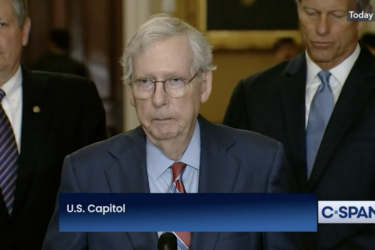Don’t forget about Medicaid as the budget debate occupies center stage in Washington.
Howard Gleckman reminds us why this is so important in a chock-full-of-data blog post at Forbes. I give Gleckman a boatload of credit. He’s one of the few reporters who consistently writes about vulnerable older people – a population that gets far too little attention.
 Judith Graham (@judith_graham), AHCJ’s topic leader on aging, is writing blog posts, editing tip sheets and articles and gathering resources to help our members cover the many issues around our aging society.
Judith Graham (@judith_graham), AHCJ’s topic leader on aging, is writing blog posts, editing tip sheets and articles and gathering resources to help our members cover the many issues around our aging society.
If you have questions or suggestions for future resources on the topic, please send them to judith@healthjournalism.org.
Among the key points in his post: Two-thirds of Medicaid budgets are spent on frail older people and young people with disabilities. One-third of budgets, about $120 billion in total, goes to long-term care.
Older people covered by Medicaid are poor and, many of them, dependent and chronically ill. About 9 million people known as “dual eligibles” are covered by Medicaid and Medicare, and this is a very vulnerable population, Gleckman observes:
“According to the Kaiser Family Foundation, one-quarter of elderly who are eligible for both programs need assistance with at least three activities of daily living (such as bathing, going to the bathroom, eating, or dressing). Many are, in other words, helpless.
“Among the 1 million dual eligibles who are the most costly Medicaid patients, nearly half are aged 80 or older, three-quarters need help with 3 or more activities of daily living, three-quarters live in institutions, and one out of every six has Alzheimer’s.”
“Ninety percent are poor or near-poor. More than half have incomes of less than $10,000.”
Many politicians discussing cuts don’t really understand how Medicaid works or who it covers, Gleckman notes. You can be sure this is as true of your state legislators as it is of those in Congress.
So, what does this mean for you, reporters?
First, gather the data. What portion of your state’s Medicaid budget goes to the elderly? What portion is spent on long-term care services? And, regarding long-term care, how much of that goes to nursing homes versus home- and community-based services?
Next, understand the lay of the land. Medicaid is a prime target for state budget cuts. What proposals are being floated in your state to trim Medicaid budgets? How would these proposals affect older people covered by Medicaid? What are the justifications offered by supporters? What are the fears voiced by advocates?
States across the country are preparing to move forward with plans to move dual eligibles into managed care arrangements. Is your state one of them? Do you know what’s being planned? What’s the evidence that it will save costs, and how will this be achieved? What are potential risks to seniors who depend on Medicaid?
Also, there’s some interest by states in tightening rules to make sure that middle-class seniors don’t use Medicaid as a de facto long-term care program. Is there data in your state about how often this occurs? Is anyone taking a look at middle-class and wealthy seniors who arrange to have assets and income transferred out of their names so they become impoverished and qualify for Medicaid long-term care?
My sense is that there’s more actual action on the Medicaid front right now than there is with Medicare. This is where uncovered stories lie. True, Medicare is experimenting with innovation and new payment mechanisms, and yes, these are important stories to cover. But Medicaid, that’s the hottest issue there is in many states, along with education and how to pay for pensions. Look there, and you’ll find issues to write about for months to come.









